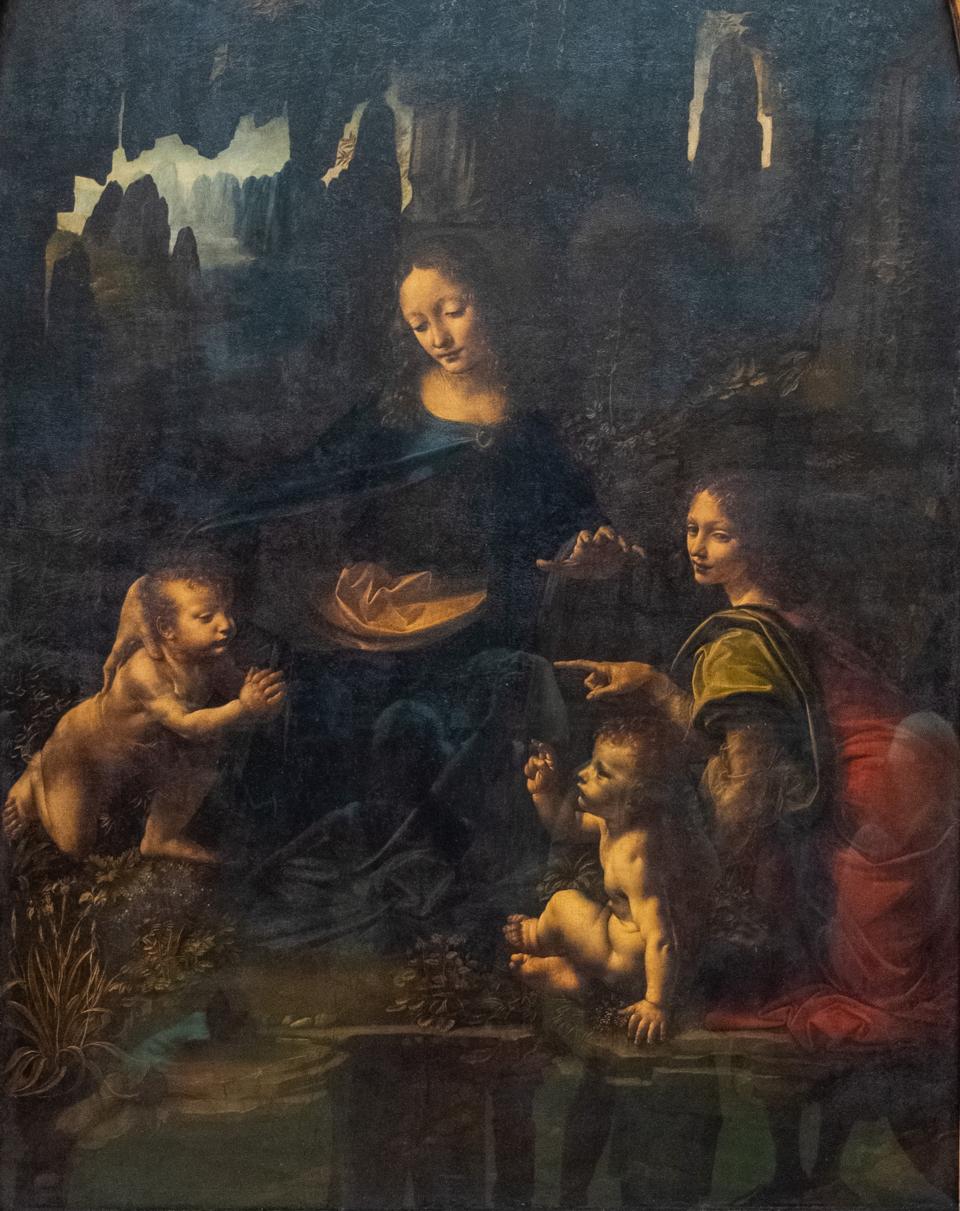Madonna on the Rocks

by Leonardo da Vinci (1452 -1519).
Leonardo's works must be placed in the sixteenth century, in a period of blossoming Italian painting for a revolution of ideas that heralded the Reformation and subsequent counter-reformation. The French King François I was a great admirer of Italian painting and brought Leonardo da Vinci to paint his court in 1516. A royal guest.
In the Madonna of the Rocks, the landscape is an essential part of the composition. Mary welcomes the young Saint John, an orphan abandoned in a cave under the protection of the archangel Gabriel, kneeling on his right. The faces express the same tranquillity as the Mona Lisa, but here the dark grotto and the rocky landscape add a dramatic quality that seems to announce the fate of these two babies, Jesus and San Juan. Unlike other representations of this scene where the figures are set in a desert, Leonardo changes the backdrop to a mineral landscape. This would have been very new for the parishioners in that period. The wonderful interaction of hands and looks in this composition is an example of the storyteller's innovative approach to telling stories. Saint John is shown looking at Jesus in recognition of his future sacrifice for humanity.
Leonardo da Vinci also shows his masterful use of oil painting and his exceptional understanding of light and shadow. He is the Renaissance man par excellence, artist-engineer, invented a technique called Sfumato which he achieved through the stratification of painting and the creation of smooth transitions between colors and contours.
Madonna of the Rocks is one of the most important paintings in the collection of King Francis I. A second Madonna of the Rocks can be seen in the National Gallery in London.
© ChatGPT 3.5